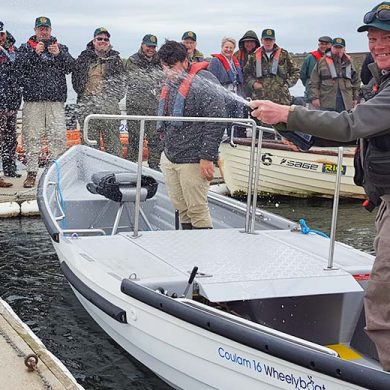NASF had urged the government to adopt a precautionary approach to proposals by Landsvirkjun, Iceland‘s biggest power company, to harness power from the river Thjorsá. A proposal to this effect will now be presented to the Icelandic Parliament.
The Thjórsá, the country‘s biggest river system, originates in the mighty Hofsjökull glacier in the middle of Iceland. It hosts Iceland´s biggest sustainable wild salmon stock and also holds brown trout, sea trout and some char. Nearly 90% of the natural fish habitat in the river lies above the Urridafoss waterfall and revolutionary changes were proposed to the flow of the river. NASF warned the government that this would create huge losses of habitat and nursery areas for juvenile salmon.
Using taxpayers cash the power company, has invested heavily in the projects but had failed to fully assess the colossal damage to the natural environment that could be caused. It had also failed to consult with the river owners and merely cited the “Columbia and Snake rivers in the Northwest United States as evidence of their good intentions. Twenty years ago the river owners around Thjórsá negotiated a deal that provided them with a fish ladder at the Buda waterfall. It appears to be reasonably successful but many of the river owners say it is just a start to huge salmon enhancement activities envisoned for the whole river system.
Over the last decade or so Iceland river catches have doubled and trebled following the strict protection and enhancement schemes that progressive angling operators and river owners in Iceland have introduced. These include conservation deals in the marine environment, coastal nets buyouts, catch-&-release, carefully focused stocking projects and a variety of other innovative enhancment work.
Orri Vigfusson, chairman of the North Atlantic Salmon Fund (NASF) says that schemes like the now-suspended Thjórsá plan should be an international issue and be related to climate changes. „ As glaciers shrink the snow melt from which many rivers spring will reduce. As sea levels rise, salination of the lower reaches will increase,„ he said.
Far from building new dams we need to accelerate their removal. In the last ten years only 410 American dams were removed and there are 84,000 more. Demolishing big obstructions like hydro dams will improve natural river flows and the production of feed and oxygen for the fish, mammals and invertebrates that live in or around a river. Hopefully marine life will also stand to benefit.
In Maine, the 160-year-old Edward Dam was removed from the Kennebec River in 1999 and today the river boasts a thriving and diverse fishery. Undamming the Elwha river in Washington is expected to boost its salmon population from 3,000 to 400,000 and this will attract bears, eagles and other wildlife that thrived before the river dams were built in 1914.
NASF is currently supporting plans to remove dams obstructing wild salmon runs in the Sélune river in the Mont-Saint-Michel area of Normandy in France. It is also supporting an Atlantic Salmon Federation project to remove the dams on the Penobscot river in Maine that would open up a thousand miles of new salmon habitat.
In submitting its biological and environmental assessment, NASF sought the advice of Dr Margaret Filardo, Fishery Biologist and Michele DeHart, Manager of the Fish Passage Center in Oregon. A host of Icelandic experts including the Thórsá river board have advised and participated in the NASF assessment of this project.
“We now need a few years to explore the real opportunities the Thórsá river system can offer,” Orri Vigfusson said. “Our focus will be on the salmon stocks and we shall use the vast expertise our worldwide teams have amassed over the last 20 years. We hope to develop a master plan for a massive salmon enhancement programme throughout this uniquely productive water system. Simultaneously we shall need to develop angling programmes and encourage eco-tourism and a host of other projects that will create new jobs and new income revenues for the local population that live beside this huge river.”
The North Atlantic Salmon Fund, NASF, is an international coalition of voluntary private sector conservation groups who have come together to restore stocks of wild Atlantic salmon to their historic abundance. – nasf@vortex.is – www.nasfworldwide.com

